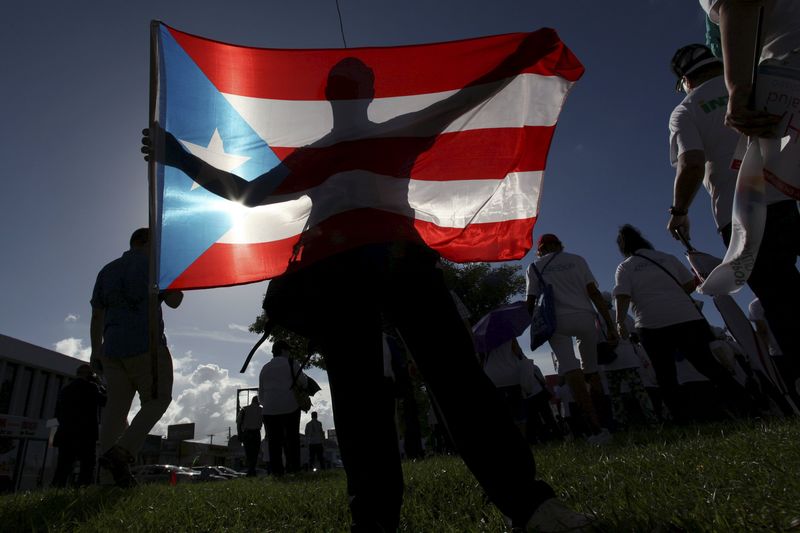By Megan Davies and Nick Brown
NEW YORK/SAN JUAN (Reuters) - Puerto Rico on Friday presented a plan to creditors that asks them to take a deep discount on their debt - an aggregate of around 45 percent, two sources familiar with the situation said, as the debt-ridden island tries to pull itself out of fiscal crisis.
With a 45 percent poverty rate and exodus of its population to the United States, Puerto Rico is trying to solve an economic crisis before substantial debt payments come due in May and July. The U.S. territory has defaulted on some of its debt and is trying to persuade creditors to take concessions.
Under the plan unveiled Friday, four tranches of bonds would be exchanged into two new bonds with different structures.
Haircuts on the debt would differ according to which bonds are being exchanged and would reflect the current trading of those bonds, the sources said, with general obligation bonds getting the best treatment, followed by COFINA bonds, subordinated COFINA bonds and then a slew of other bonds which are to be included in the offer.
The aggregate haircut across the structures would be around 45 percent, the sources said. Current trading of the bonds would indicate that general obligation debt would take a 30 percent haircut from the par value. General obligation bonds issued in 2014 are currently trading around 72 cents on the dollar.
The category of other bonds to be exchanged would include about a dozen issues which include those supported by tax and legislative appropriations - such as bonds of highway authority HTA and infrastructure authority PRIFA and even PFC, which defaulted on its payments in August. It would exclude a handful of bonds including PREPA and aqueduct and sewer agency PRASA.
The plan may be greeted with scepticism by creditors, with one of the sources saying it was "uninviting" and noting it was premised on the island's financial projections, which some creditors believe are overly optimistic.
The newly-structured bonds would consist of a so-called 'base' bond and a 'hope' bond, the sources said, with the latter being a bet on the long-term health of the U.S. territory.
The base bond would start paying interest in 2018 at 2 percent, rising to 5 percent in 2021 when it would also pay principal, the sources said. It would have a general obligation guarantee and would receive pledged revenues to support the credit, one of the sources said.
There is a waterfall mechanism built into the offer which would give certain bonds a priority of payments depending on which tranche they are, the source said. The bonds which would be issued are expected to carry a roughly 5 percent yield, that source said.
The hope bond is a 30-year issue and would be based on a revenue formula with the aim of starting to pay out by 2026, the source said, with a cap on the payment for any given year. The territory could elect not to make a payment if unexpected budget costs come up. Some details of the bond exchanges were reported by The Wall Street Journal earlier.
If the territory fails to get a supermajority of creditors to agree to the exchange, it has the right to withdraw the offer, one of the sources said. That could spell a difficult scenario for creditors who may be left with illiquid bonds.
The plan is expected to be made public on Monday, the sources said.
